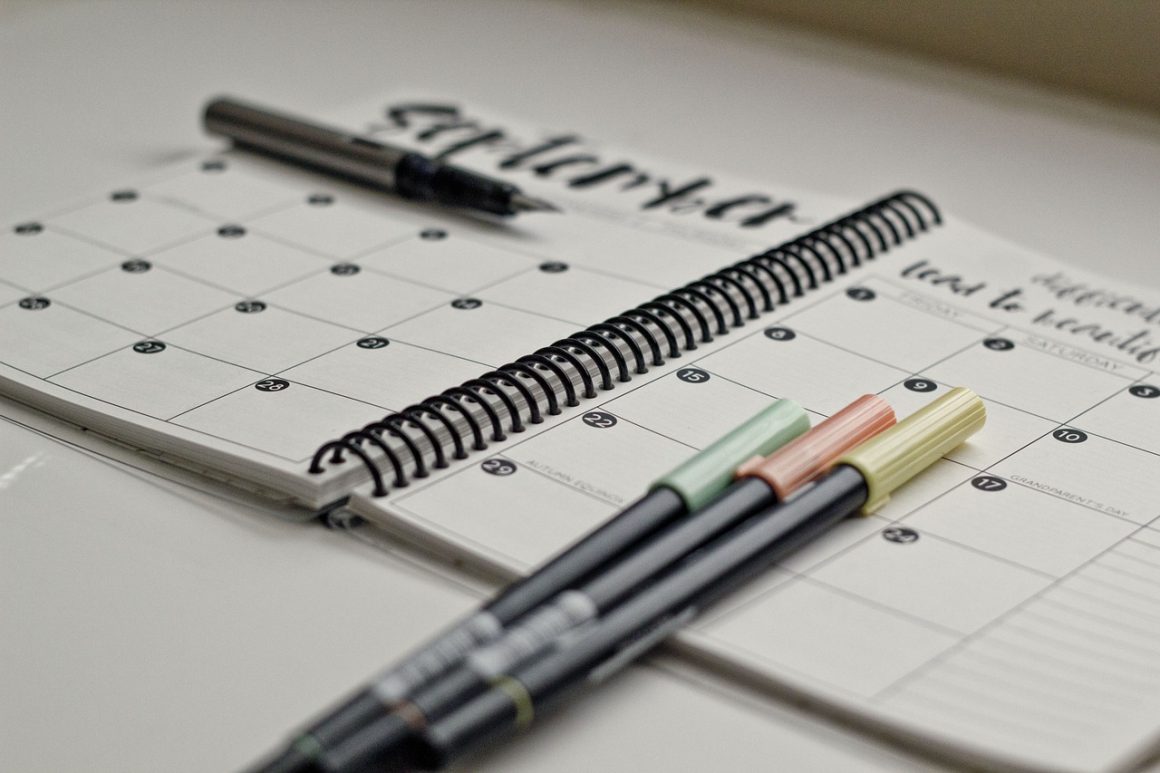For anyone who is ADHD, it is imperative to be organized. This is so that the person can keep focused and complete tasks or goals. The best way to get organized is to have a planner. Finding the right planner can be costly if you are unsure of what to get.
Well, we are here to help and all the work has been done for you. Below you will find the planner for those who have ADHD and all the information as to why they are a good choice.
Best ADHD Planners
1. Clever Fox Planner
This non-dated weekly planner is one of the planners for adults with ADHD. This planner is designed to help you get organized and achieve goals. It helps to gain a clarified vision for life and to be able to break down large goals into smaller more achievable pieces.
The unique layouts aid in bringing healthier habits and positive daily rituals into your life. With the incorporation of gratitude and affirmations with goal setting, it is possible to bring out the best you. They stand behind their product so much that they guarantee it will work or they will exchange/refund without question.
Everything was thought of when this planner was developed. The layouts include many pages for making goals and planning. It even includes stickers to help with the planning process. If you want to achieve goals, then this is the planner for you.
Room for all my planning without having bulk. Plenty of room to write and even include evaluations to track how well you are achieving your goals. It could not be more perfect.
If you are in search of becoming the best you possible, then this planner will be the one to choose. It can track your goals and monitor your progress. For an affordable price, you can’t go wrong.
Pros
- A5 size so travels well
- Includes a guarantee from the seller
- High-quality paper and binding
- Lasts an entire year
- Many colors available
Cons
- Very detailed in the goals section
- Pages are not numbered
2. Panda Planner Pro
The perfect planner for those in need of ADHD organization tools. This planner is designed to be used daily and to learn how to gain control of your life. It uses positive psychology and neuroscience to bring out the best in you and to help reclaim productivity and happiness.
Pages are not dated so if you miss a day, you don’t lose money. It also includes lots of positive feedback to help you to gain happiness while getting on track. Perfect for accountability and being able to look at all you did or didn’t do.
The planner is really large, but I love all that is inside it. It will do all that it promises if you stay on track to filling it out. I have become more focused and mindful of where my time and even money are going. You do need to realize that it does not include a full year, so you will have to buy a new one in 5 months.
The daily pages do hold you accountable. I am still working on getting the weekly pages incorporated into my routine, there is a learning curve. I wish the ribbons were different colors, but that is not a big deal. It does not last the whole year and that is frustrating but does help with the focus.
If in search of a planner that will teach you tools to use to get on track, then this is the planner for you.
Pros
- All the tools for getting on track in life
- Holds you accountable for what you do and don’t do
- Large size for plenty of writing space
Cons
- Does not last a full year
- Large design that won’t fit in the bag
- Only available in black
3. Moleskine Classic 12-Month Daily Planner
The Moleskin Classic planner includes calendar pages and grid pages so that you can increase and track productivity. Write lists, journal, plan for the future, or anything you want with this planner. Available in hard or soft covers in several different colors, it is the perfect gift.
Features thick, ivory paper that is the perfect texture for writing. Ink will not bleed or ghost onto other pages. Rounded corners for durability and an expandable pocket on the inside. The binding is developed so that the book can lie flat to allow easier access to the pages.
I have bought this planner for three years now, not only for its convenience but for its durability. It can spend a year inside my purse and still be in great shape. The layout is perfect for tracking weekly and monthly appointments. Perfect for adding bullet journal pages without having to draw in your calendar.
This is my first time getting the moleskin planner and I wish I had done it sooner. It is one of my favorite products from the company. All the pages are labeled and dated. Included are the moon phases for the day. You can plan the day by the half hour or the hour.
Should you be in search of a planner that you can customize on the inside then this is for you. Build up a planner that meets your needs.
Pros
- Durable cover and pages
- Comes in several colors
- Can personalize the inside however you need
- Journal pages included
- Good for an entire year
- Inside pocket
Cons
- Only includes calendars and weekly pages
- Must make your lists and layouts
4. Lemome Planner – Academic Monthly & Weekly Planner
As one of the least expensive planners available, this is the academic planner for students with ADHD. It contains all the monthly and weekly calendars, with a to-do list. This makes it easy to track all the necessary information and stay on track in school.
Includes stickers that can be used throughout the year. Note columns and places to put information throughout the planner. By having it undated you can input dates to meet your needs. Includes two bookmarks, elastic closure, and A5 size for more convenience.
Due to its simple design, this is the best planner I have found for tracking school work and appointments. The stickers are nice to use throughout the book and the ribbon gives easy access to marked pages. I enjoy having the pocket in the back of the book.
As an undated planner, this has been my favorite. It does include a space where you can track yearly goals and then there is space for lists and journaling. Each month includes a bright motivational saying. Each week includes note pages. Perfect for school or someone who prefers a more minimal planner.
As far as an academic planner goes, this is the one for a student who has ADHD. It is minimal and can be customized on the inside. Its basic design allows for less distraction. If that is what you need, then this would be the planner for you.
Pros
- Undated
- Pen loop
- Elastic strap for closure
- Pocket in back
- Free stickers
- Lasts whole year
Cons
- Only comes in black
- Make your own tracking or list pages
5. Gazelle Planner – Guided Daily Planning to Improve Organization
The Gazelle Planner is designed to prioritize long and short-term goals. By following its simple format, it is possible to increase productivity and stay focused on what’s important to you.
Featuring one page per day to help plan and keep on track. Your to-do list, scheduled events, and projects are all available and insightful. The 1-2-3 goal system is designed to keep all your goals on track from yearly to daily.
With a soft and durable cover, it comes in many color options. The paper is of high quality. I can write smoothly, and the ink does not bleed or ghost through the paper. Being undated makes it perfect for my use because I do not start my planner at the typical start dates. There is plenty of writing space and it even includes a how-to on how to get the most out of the planner.
Over the years I have used a lot of planners. Finally, I have found the one that can meet all my needs and then some I didn’t know I had. It is high quality and can withstand my daily use. In the back of the planner, there are note pages to be able to keep important information. Love it! I will be using this one from now on.
For the cost, you can’t go wrong. If you need a planner that is small enough to fit in a bag, but large enough to track your life, then this is the one for you. Figure out your goals and get on track with the daily ADHD planner around.
Pros
- Comes in many colors
- Helps to make, track, and achieve goals
- Paper is sturdy
- 24-hour layout
Cons
- Must use tutorials to figure out a use
- The learning curve for use
- Only has 6 months
Tips on Choosing
For those who have ADHD, they must be able to stay organized among the chaos in their mind. This can be done by learning to use a planner. All planners are not equal, and everyone has different needs. When choosing a planner take the following into account:
-
- Age: An adult will not be tracking the same information as a 13-year-old.
- Occupations: Is this for a student, mom, or someone who has many jobs?
- Cost: Some planners are more expensive than others.
- Time: Investment of time is needed for all planners, decide how much you have.
- Short or long term: Some planners only last 5 months, while others are a year.
Find a planner that can meet all your needs and one that can help you to stay organized. While some may need a lot of tracking aids, others may work better with minimal lists and calendars.
Make the Decision
The planner for ADHD is the one that can help you become an organized and well-functioning person. By reading the over you now know all there is about the planners for ADHD.
Choose the one that can fit into your life and help you achieve your goals. Don’t waste any more time and get your life on track now!


